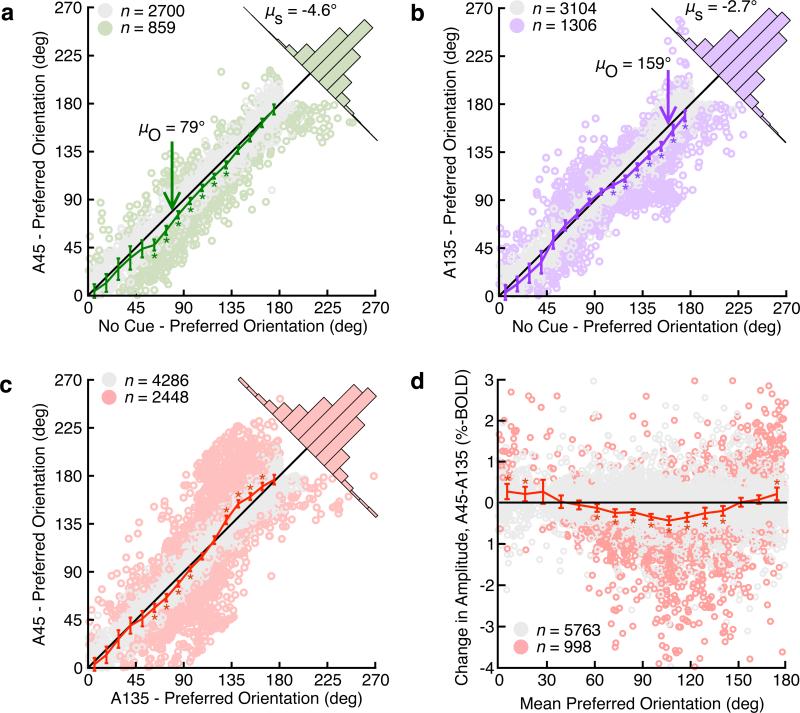4.
Attention selectively advances and amplifies orientation tuning curves. A. Voxels with an orientation preference near 79° respond sooner (have a less positive orientation preference) during A45 condition. Error bars show 99.9% confidence intervals of the mean. Note that 270° is equivalent to 90°. Inset histogram shows distribution of tuning preference shifts as distance from the identity line. (black line, identity line; [uni03BC]O, center of range with significant tuning advance; [uni03BC]S, mean tuning curve advance over all voxels). Color indicates individual voxels that are a significant (qFDR<0.01, likelihood estimation) distance from the identity line. B. As A, showing an orthogonally-distributed tuning curve advance during A135. C. Direct comparison between A45 and A135 conditions reveals a strong and orthogonal relationship between preferred orientation and changes in tuning preference. D. As C, comparing tuning amplitude between A45 and A135. Amplitude increases for voxels with preference prior to the attended orientation (* significant change, von Mises (A,B,C) or t-test (D), variable DOF, p<0.001).

